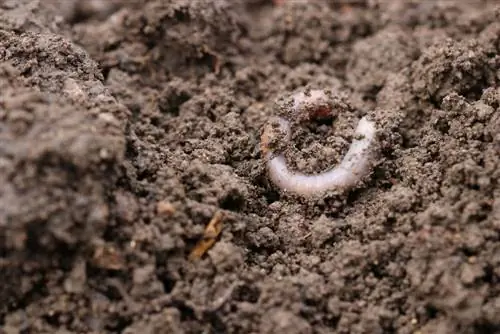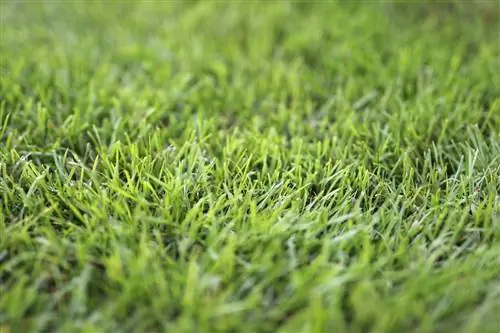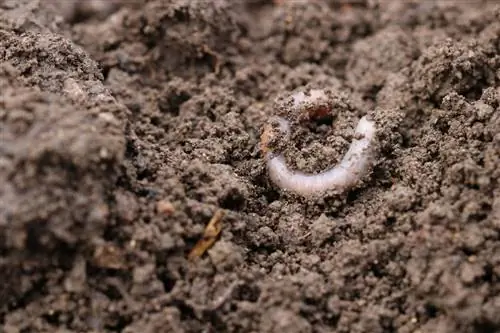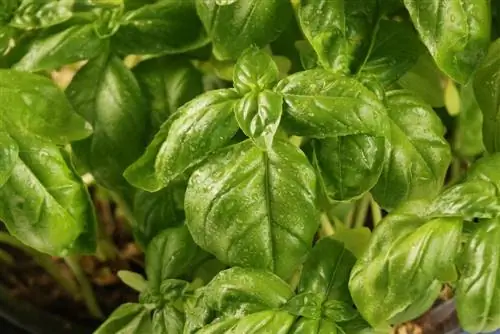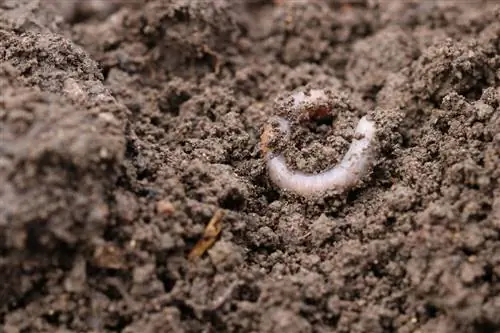- Author admin [email protected].
- Public 2023-12-17 03:39.
- Last modified 2025-01-24 12:45.
Carrying out a pH test in the garden to determine the pH value of the soil does not require any special basic chemical knowledge and can be easily carried out even by laypeople. The test pack contains detailed instructions and also information on how to interpret the test result. The pH test from the specialist store contains a tube that is closed with a cork to carry out the test. The test package also includes 8 pH soil test tablets and distilled water. A leaflet provides information about the pH value requirements of different plants.
Perform ph test
In order to carry out the pH test, it is necessary to take a soil sample from the garden. You should choose four sampling points for every 50 square meters of garden. The four soil samples of equal size are taken from a depth of 5 to 20 cm. To do this, simply take a hand shovel and cut out a piece of the lawn with a knife. After sampling, it is reset. If you look at the glass tube, you can see that only a small amount of soil is really needed. The different samples are mixed together and the tube is filled with a 1 cm high soil mixture. Then fill with distilled water up to the 3.5 cm mark. The scale on the packaging serves as a guide. The next step is to squeeze a pH soil tablet out of the blister and shake the soil test until the tablet is completely dissolved.
Tip:
You should be careful when unpacking the tablets, as in some test packages the first two tablets are already finely pulverized. In this way, a faster test result can be achieved. If you use a non-powdered tablet, you have to wait much longer for the test result. Therefore, you should crush the tablets as finely as possible with a mortar, for example, before a test.
After a few minutes, the test tablet will completely dissolve and the soil will settle in the tube, revealing the color of the test liquid.
Test result
The color of the liquid provides information about the pH value of the soil. Compare it with the color scale shown on the package. This makes it possible to correctly estimate the pH value of a soil. In most tests, the color blue indicates that the soil is pH neutral and has a pH value of 7. If a garden owner receives this result, there is reason to be happy. For most plants, pH 6-7 provides excellent conditions for growth. In this environment, which is not too alkaline and not too acidic, nutrients from fertilizers can dissolve best. This means that you do not have to undertake any significant additional maintenance measures and benefit from an excellent lime content.
Test results of lower and higher pH values
Colors like yellow or green signal that the soil has a very low pH value. If various plants do not thrive in a garden, you can usually assume that the soil has a low pH value. A test gives you additional certainty. In addition to the very modest plant growth, acidic soil conditions may also release increased concentrations of heavy metals such as aluminum. If you want to increase the pH value of the soil, you should add lime.
The amount depends on the size of the garden and whether it is only acidic or extremely acidic soil (ph value 4 or less). After a few weeks of treatment, it is recommended to carry out another test. This determines whether the pH value of the soil has improved and whether certain plants can be grown. Of course, there is also the option of selecting plants that are suitable for acidic soil conditions. If the test result shows a pH value lower than 6, it is recommended to create a heather garden.
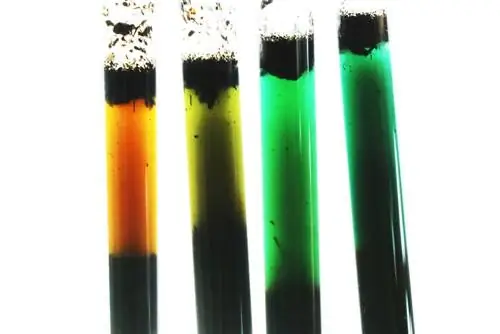
Soil with a high pH value is also not ideal for most plants. Alkaline soil conditions mean that nutrients are difficult to utilize and are washed out again very quickly. Plants develop a deficiency in trace elements such as manganese deficiency, boron, zinc, copper and iron deficiency and in nutrients. This deficit can be recognized by leaf chlorosis (pale or yellow leaves). In this case, acidic fertilizers such as cattle dung, peat are used. You also have the option here of foregoing additional fertilization and simply selecting lime-loving plants.
Frequently asked questions
Why should I determine the pH of my garden soil?
The pH value of the soil is particularly important information. This allows garden owners to determine whether their garden has ideal conditions for plant growth. If plants in a garden only develop sparsely despite extensive care, a pH value that is too low or too high may be to blame. Ideally, the soil in a garden should have a pH value of 6-7.
Do I need chemical knowledge to carry out a pH test?
No. The pH test for the soil, which is available from specialist retailers, can also be carried out easily by laypeople. You only have to take four soil samples and then follow the precisely described instructions in the test instructions. The package contains all the utensils needed to carry out the pH test such as tubes and test tablets. In addition, a package insert explains what a specific test result means. Depending on the color of the test liquid in the tube, it can be seen whether the soil is acidic, normal or alkaline. Depending on the provider, a package includes up to eight tablets.

